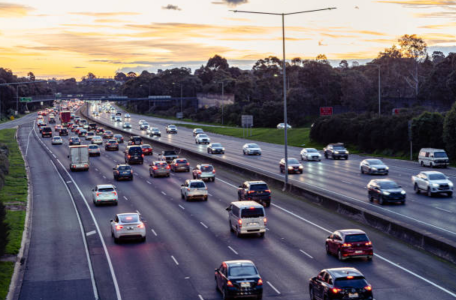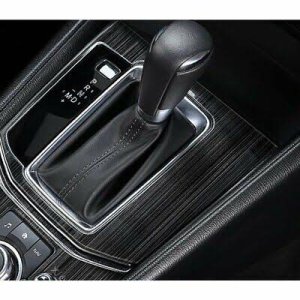Manual car shortage drives up roadwork costs across Australia
By
Gian T
- Replies 18
If you’ve noticed that learning to drive a manual car is getting harder—and pricier—across Australia, you’re not alone.
The humble stick shift, once a rite of passage for Aussie drivers, is fast becoming a rare skill, and the cost of acquiring it is climbing faster than a kangaroo on the hop.
So, what’s behind this shift, and what does it mean for those of us who still value the art (and practicality) of driving a manual?
Automatic cars have taken over Australian roads, and with the rise of electric and hybrid vehicles (which are almost exclusively automatic), the demand for manual driving lessons has plummeted.
Manufacturers are phasing out manual models, and as a result, fewer instructors are offering manual lessons.
This shrinking pool of instructors means that if you—or your grandkids—want to learn to drive a manual, you’ll need to hunt a bit harder and pay a bit more.
But why bother with a manual licence at all? For many Aussies, especially those in trades, agriculture, or regional areas, manual vehicles are still the norm.
Utes, trucks, and older fleet vehicles often come with a stick shift, and having a manual licence keeps your options open—whether you’re looking for work or want to be able to drive any car that comes your way.
Some drivers also swear by the extra control and connection to the road that a manual provides.
Here’s where things get sticky. According to recent data from driving school EzLicence, the cost of manual driving lessons has increased significantly, particularly in certain cities.
Adelaide takes the (expensive) cake, with an average hourly rate of $271.20 for a manual lesson—more than double the next most expensive city, Canberra, at $92.90.
Newcastle, Sydney, and Geelong round out the top five, all hovering around the $87–$89 mark.
This represents a dramatic shift from just a year ago, when manual lessons were less expensive than automatic ones.
In 2023–24, manual lessons averaged $77.65 per hour, compared to $80.16 for automatics.
Fast forward to 2024–25, and manual lessons have jumped to $83.87, while automatics have only nudged up to $80.61.
Even automatic learners aren’t immune to price hikes. Adelaide again tops the charts at $112.93 per lesson, with Wollongong and Canberra not far behind.
If you’re looking for a bargain, Bendigo, Hobart, and Sydney offer the cheapest automatic lessons, all below the national average.
It’s a classic case of supply and demand. With fewer instructors offering manual lessons, those who do can charge a premium.
And as the pool of manual-licensed drivers shrinks, businesses that rely on manual vehicles—think tradies, delivery drivers, and farmers—are finding it harder to recruit staff with the right skills.
Amanda Butler from EzLicence points out that this trend could deter learners from even attempting to get a manual licence, especially younger Aussies or those on a tight budget.
'This combination of cost and availability could certainly be influencing learner preferences,' she said.
'While some still seek the added flexibility of a manual licence, rising prices—especially in cities like Adelaide—may be a deterrent.'
While automatics are becoming the norm in the cities, manual cars are still king in many regional and rural areas.
For those living outside the big smoke, being able to drive a manual isn’t just a nice-to-have—it’s often a necessity.
For businesses, having staff who can drive any vehicle in the fleet is a significant advantage.
But with lesson prices rising and instructors becoming scarce, there’s a real risk that fewer people will be qualified to drive manuals in the future.
This could have knock-on effects for industries that rely on manual vehicles, potentially driving up costs and making it harder to find suitable staff.
Experts suggested that supporting manual driving instructors—through incentives or by reducing operational costs—could help keep this option viable.
After all, learner drivers should have the freedom to choose what suits them best, whether that’s manual or automatic.
For now, however, it appears that manual lessons will continue to be a premium service, particularly in some areas of the country.
South Australia is the most expensive state for manual lessons, with prices rising 10.7 per cent since last year.
Tasmania, on the other hand, remains the most affordable, averaging $76.17 per hour.
If you’re after a bargain, Wollongong, Bendigo, the Gold Coast, Perth, and Cairns are your best bets for cheaper manual lessons.
So, is the manual licence heading for extinction? Not quite yet.
There’s still demand, especially in regional areas and certain industries.
But unless something changes, manual driving will likely become an increasingly niche skill—one that comes with a hefty price tag.
For those of us who grew up learning to 'drive stick' (and maybe even taught our kids or grandkids the same), it’s a bittersweet shift.
There’s a certain satisfaction in mastering the clutch and gearstick, and it’s a skill that can come in handy in all sorts of situations.
 Have you noticed the rising cost of driving lessons—manual or automatic? Did you teach your kids or grandkids to drive a manual, or do you think it’s a skill worth keeping alive? Share your stories in the comments below.
Have you noticed the rising cost of driving lessons—manual or automatic? Did you teach your kids or grandkids to drive a manual, or do you think it’s a skill worth keeping alive? Share your stories in the comments below.
Read more: Immediate licence changes hit Australia—act now before it's too late!
The humble stick shift, once a rite of passage for Aussie drivers, is fast becoming a rare skill, and the cost of acquiring it is climbing faster than a kangaroo on the hop.
So, what’s behind this shift, and what does it mean for those of us who still value the art (and practicality) of driving a manual?
Automatic cars have taken over Australian roads, and with the rise of electric and hybrid vehicles (which are almost exclusively automatic), the demand for manual driving lessons has plummeted.
Manufacturers are phasing out manual models, and as a result, fewer instructors are offering manual lessons.
This shrinking pool of instructors means that if you—or your grandkids—want to learn to drive a manual, you’ll need to hunt a bit harder and pay a bit more.
But why bother with a manual licence at all? For many Aussies, especially those in trades, agriculture, or regional areas, manual vehicles are still the norm.
Utes, trucks, and older fleet vehicles often come with a stick shift, and having a manual licence keeps your options open—whether you’re looking for work or want to be able to drive any car that comes your way.
Some drivers also swear by the extra control and connection to the road that a manual provides.
Here’s where things get sticky. According to recent data from driving school EzLicence, the cost of manual driving lessons has increased significantly, particularly in certain cities.
Adelaide takes the (expensive) cake, with an average hourly rate of $271.20 for a manual lesson—more than double the next most expensive city, Canberra, at $92.90.
Newcastle, Sydney, and Geelong round out the top five, all hovering around the $87–$89 mark.
This represents a dramatic shift from just a year ago, when manual lessons were less expensive than automatic ones.
In 2023–24, manual lessons averaged $77.65 per hour, compared to $80.16 for automatics.
Fast forward to 2024–25, and manual lessons have jumped to $83.87, while automatics have only nudged up to $80.61.
Even automatic learners aren’t immune to price hikes. Adelaide again tops the charts at $112.93 per lesson, with Wollongong and Canberra not far behind.
If you’re looking for a bargain, Bendigo, Hobart, and Sydney offer the cheapest automatic lessons, all below the national average.
It’s a classic case of supply and demand. With fewer instructors offering manual lessons, those who do can charge a premium.
And as the pool of manual-licensed drivers shrinks, businesses that rely on manual vehicles—think tradies, delivery drivers, and farmers—are finding it harder to recruit staff with the right skills.
Amanda Butler from EzLicence points out that this trend could deter learners from even attempting to get a manual licence, especially younger Aussies or those on a tight budget.
'This combination of cost and availability could certainly be influencing learner preferences,' she said.
'While some still seek the added flexibility of a manual licence, rising prices—especially in cities like Adelaide—may be a deterrent.'
While automatics are becoming the norm in the cities, manual cars are still king in many regional and rural areas.
For those living outside the big smoke, being able to drive a manual isn’t just a nice-to-have—it’s often a necessity.
For businesses, having staff who can drive any vehicle in the fleet is a significant advantage.
But with lesson prices rising and instructors becoming scarce, there’s a real risk that fewer people will be qualified to drive manuals in the future.
This could have knock-on effects for industries that rely on manual vehicles, potentially driving up costs and making it harder to find suitable staff.
After all, learner drivers should have the freedom to choose what suits them best, whether that’s manual or automatic.
For now, however, it appears that manual lessons will continue to be a premium service, particularly in some areas of the country.
South Australia is the most expensive state for manual lessons, with prices rising 10.7 per cent since last year.
Tasmania, on the other hand, remains the most affordable, averaging $76.17 per hour.
If you’re after a bargain, Wollongong, Bendigo, the Gold Coast, Perth, and Cairns are your best bets for cheaper manual lessons.
So, is the manual licence heading for extinction? Not quite yet.
There’s still demand, especially in regional areas and certain industries.
But unless something changes, manual driving will likely become an increasingly niche skill—one that comes with a hefty price tag.
For those of us who grew up learning to 'drive stick' (and maybe even taught our kids or grandkids the same), it’s a bittersweet shift.
There’s a certain satisfaction in mastering the clutch and gearstick, and it’s a skill that can come in handy in all sorts of situations.
Key Takeaways
- Manual driving instructors are becoming harder to find and more expensive across Australia, as automatic cars become the norm and fewer people are learning to drive a manual.
- In 2024–25, manual driving lessons have jumped in price, costing more than automatic lessons for the first time, with Adelaide being the most expensive city for manual learners at $271.20 per hour.
- A shortage of manual-licensed drivers could make it harder for businesses, especially in trades and regional areas where manual vehicles are still common, to recruit suitable staff.
- Experts warn that unless more is done to support and increase the supply of manual instructors, high prices and limited access are likely to persist, deterring learners and reducing the number of people qualified to drive manual vehicles.
Read more: Immediate licence changes hit Australia—act now before it's too late!









